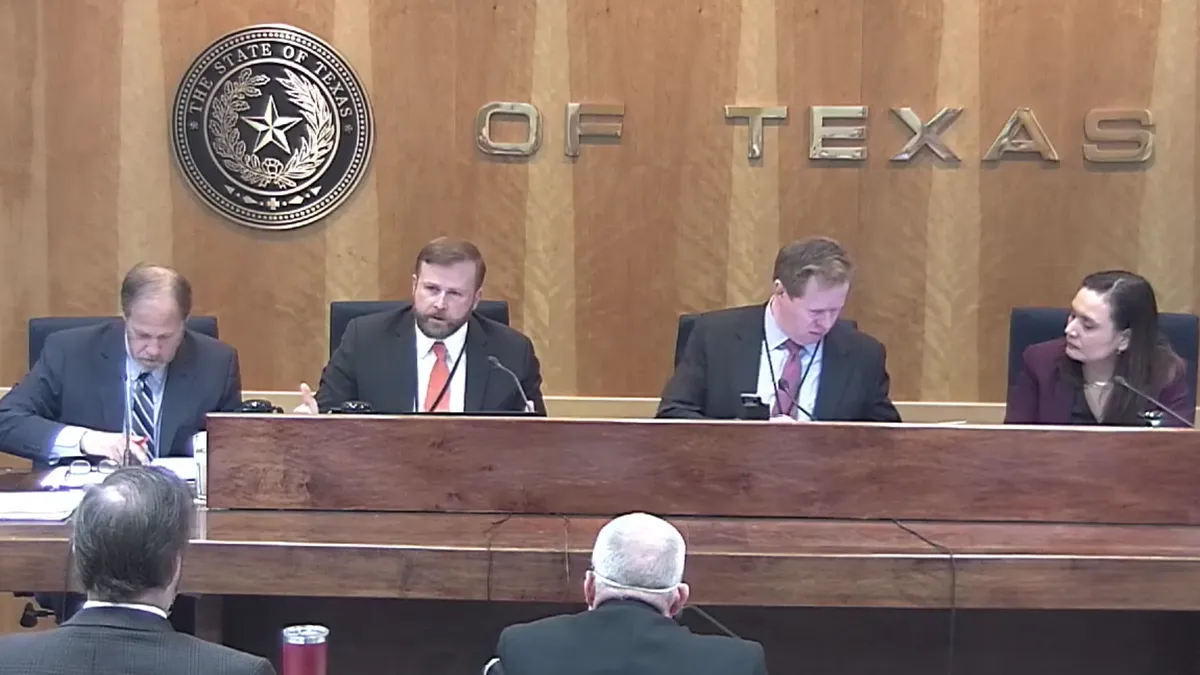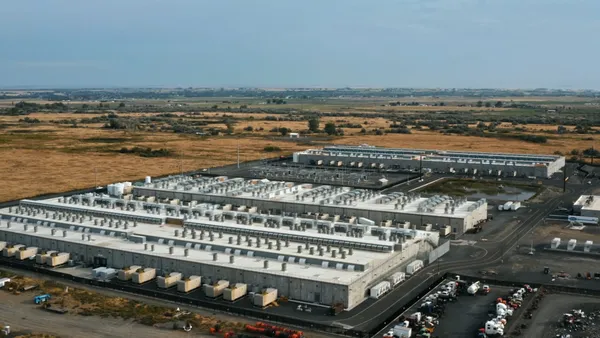Dive Brief:
- Electric utilities, transmission operators and power generators in Texas must file Emergency Operations Plans (EOP) with regulators by April 15, including strategies for improved communications, robust supply chains, cold weather events and cyberattacks.
- Utilities already develop emergency plans but the Public Utilities Commission of Texas adopted more comprehensive EOP requirements Friday, at the direction of lawmakers. The state wants to avoid a repeat of widespread, deadly blackouts that occurred in February 2021 during winter storm Uri.
- Regulators will hold a workshop to assist utilities with the first EOP deadline. Going forward, the annual plans will be due March 15 and will "establish the bones of a policy that we can grow in the future to adapt to any threat," Commissioner Will McAdams said.
Dive Insight:
Texas continues to harden its electric grid against extreme weather interruptions, but regulators say the benefits of added resilience will extend beyond winter.
"I think this rule is timely, given the situation that the country may face with foreign actors who may have an interest in our system, and the reliability of our system," McAdams said. "I think the comprehensive nature of the rule envisions that. Safeguards are being put in place that will help us deal with any threat moving forward."
Electric companies say they have been closely monitoring Russia's invasion of Ukraine and are on guard against potential cyberattacks targeting U.S. utilities. The Edison Electric Institute, which represents investor-owned utilities, is partnered with the federal government through the Electricity Subsector Coordinating Council to share intelligence.
The new Texas rule "provides increased transparency and ensures that the commission has more visibility" into how utilities will deal with emergencies, Commissioner Lori Cobos said.
Utilities will need to file redacted plans for public inspection, and make full plans available to PUCT staff upon request. This will allow the commission to "verify that the electric industry is ready to respond to an emergency event and provide critical information to Texans across the state during those events," Cobos said.
EOPs must "address both common operational functions that are relevant across emergency types," as well as include "annexes" that lay out plans for specific types of emergencies including pandemics, cyberattacks, wildfires and hurricanes.
Utility plans must also describe the emergency procedures "for handling complaints and for communicating with the public," as well as the media, customers, regulators, local governments, the Office of Public Utility Counsel and other entities.
Commissioners noted that some utilities expressed concern with the "rapidly approaching" deadline and directed staff to hold an informal workshop to assist with interpreting the rule and filing requirements. Notice of that workshop could come this week.
Texas has been working quickly to strengthen its grid and energy markets. In January, the PUCT issued an implementation blueprint for wholesale market changes. The commission also approved adjustments to the grid operator's scarcity pricing mechanism, and required power plants and transmission facilities to weatherize their assets.
Many of the changes come at the direction of state lawmakers. Texas Gov. Greg Abbott, R, signed Senate Bills 2 and 3 into law in June, reforming the state's grid operator, the Electric Reliability Council of Texas.
The new EOP requirements are "a key part of the reforms," PUCT Chairman Peter Lake said. "This is a big deal to get this done."
Other changes to Texas markets are still in the works and will take longer to implement. The commission had wanted to have a firm fuel and backstop reliability service in place before next winter, but observers say that may not come online until 2023 or 2024 due to the complexity of developing new market products.















